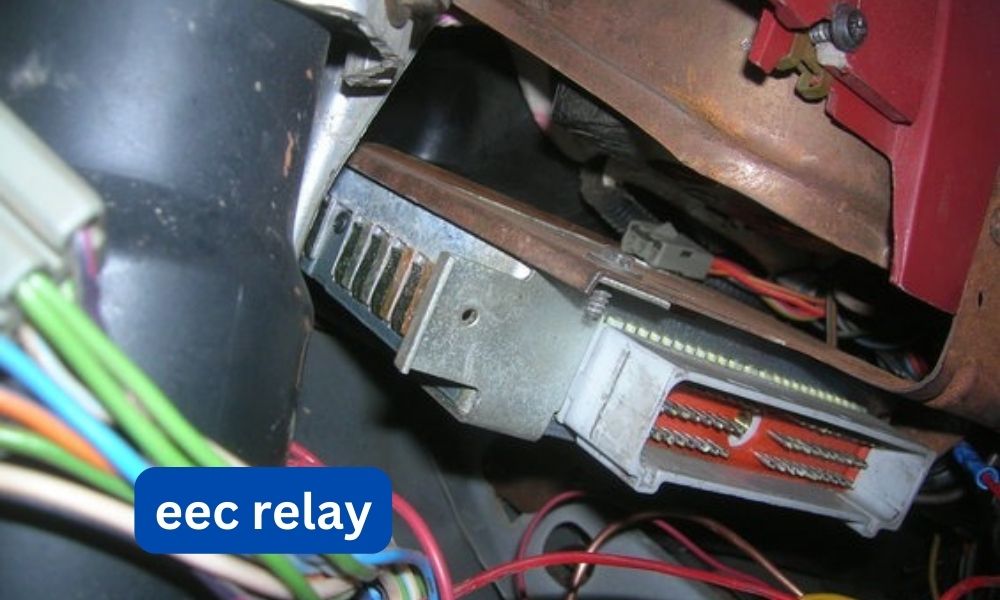When it comes to the functioning of a vehicle, there are numerous components that work together to ensure its smooth operation. One such component is the EEC relay. The EEC relay, also known as the Electronic Engine Control relay, plays a crucial role in the proper functioning of a vehicle’s engine. In this article, we will delve into the details of what an EEC relay is, how it works, and its significance in the overall performance of a vehicle.
Contents
Understanding the EEC Relay
The EEC relay is an essential part of a vehicle’s engine control system. It is responsible for providing power to the Electronic Engine Control module, which is the brain of the engine management system. The EEC module receives input from various sensors and makes necessary adjustments to ensure optimal engine performance.
The EEC relay acts as a switch that controls the power supply to the EEC module. It receives a signal from the ignition switch and, based on that signal, either allows or interrupts the flow of power to the EEC module. This relay is typically located in the engine compartment fuse box or the power distribution center.
How Does an EEC Relay Work?
The EEC relay operates using an electromagnetic coil and a set of contacts. When the ignition switch is turned on, it sends a low voltage signal to the EEC relay. This signal energizes the electromagnetic coil, creating a magnetic field. The magnetic field then pulls the contacts together, completing the circuit and allowing power to flow to the EEC module.
Read:What Does Parked Regen Inhibited Mean?Once the EEC module receives power, it starts analyzing data from various sensors, such as the oxygen sensor, throttle position sensor, and coolant temperature sensor. Based on this data, the EEC module makes adjustments to the fuel injection, ignition timing, and other engine parameters to ensure optimal performance and fuel efficiency.
When the ignition switch is turned off, the signal to the EEC relay is cut off, de-energizing the electromagnetic coil. This causes the contacts to separate, interrupting the power supply to the EEC module and shutting down the engine.
Significance of the EEC Relay
The EEC relay plays a critical role in the overall performance and reliability of a vehicle’s engine. Here are some key reasons why the EEC relay is significant:
- Power Distribution: The EEC relay ensures that the EEC module receives a consistent and reliable power supply. Without the EEC relay, the engine control system would not function properly, leading to poor performance and potential engine damage.
- Protection: The EEC relay also acts as a protective device for the EEC module. It prevents power surges and voltage spikes from reaching the module, safeguarding it from potential damage.
- Fuel Efficiency: By continuously monitoring and adjusting engine parameters, the EEC module helps optimize fuel efficiency. This, in turn, reduces fuel consumption and lowers emissions, contributing to a greener environment.
- Diagnostic Capabilities: In modern vehicles, the EEC module is equipped with diagnostic capabilities. It can detect and store error codes related to engine malfunctions. These error codes can be retrieved using a diagnostic tool, helping mechanics identify and resolve issues quickly and accurately.
Common Issues with the EEC Relay
While the EEC relay is a reliable component, it can occasionally encounter issues. Some common problems associated with the EEC relay include:
Read:What does edelbrock eps stand for?- Relay Failure: Over time, the electromagnetic coil or the contacts in the EEC relay can wear out, leading to relay failure. This can result in intermittent power supply to the EEC module or a complete loss of power, causing the engine to stall.
- Electrical Issues: Loose connections, corroded terminals, or damaged wiring can also affect the performance of the EEC relay. These issues can disrupt the flow of power to the EEC module, leading to engine performance problems.
- Heat-Related Problems: The EEC relay is often exposed to high temperatures in the engine compartment. Prolonged exposure to heat can cause the relay to overheat and fail. It is important to ensure proper cooling and ventilation around the relay to prevent heat-related issues.
Conclusion
The EEC relay is a vital component of a vehicle’s engine control system. It ensures the proper functioning of the EEC module, which is responsible for optimizing engine performance and fuel efficiency. Understanding the role and significance of the EEC relay can help vehicle owners and mechanics diagnose and resolve issues related to engine performance. Regular maintenance and inspection of the EEC relay can help prevent potential problems and ensure the smooth operation of the engine.
Read:What Does Parked Regen Inhibited Mean?







